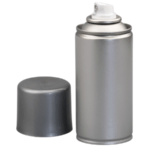Ignition Distance Testing: Ensuring Aerosol Safety and Regulatory Compliance
Ignition distance testing is a critical analytical procedure used to determine the distance at which an aerosol product can be ignited when sprayed toward a standardized ignition source. This assessment is essential for accurate hazard classification, proper labeling, and regulatory compliance in accordance with applicable legislation, like the Globally Harmonized System of Classification and Labelling of Chemicals (GHS) and Transportation of Dangerous Goods in Europe, US and Canada.
Purpose and Regulatory Context
Aerosol products present unique fire hazards due to their pressurized contents and the potential for rapid ignition. Under GHS, ignition distance testing is required to evaluate the flammability characteristics of aerosols and to determine their hazard category.
Test results directly inform:
- Product labelling requirements, including precautionary statements and hazard symbols.
- Safety Data Sheet (SDS) documentation, product classification
- Classification decisions under Canadian and international regulations.
Failure to accurately characterize aerosol flammability can result in non-compliance, enforcement actions, and increased liability exposure.
Test Methodology
Ignition distance testing is conducted under controlled laboratory conditions to ensure accuracy and repeatability. The procedure involves the following steps:
- Preparation of the Test Environment
The test is performed in a draft-free environment at ambient temperature, using calibrated equipment to maintain consistency. - Standardized Ignition Source
A small, defined flame (commonly a butane-fueled ignition device) is used as the ignition source. - Spray Application and Observation
The aerosol product is discharged horizontally toward the flame at a fixed flow rate. The operator observes whether ignition occurs. - Measurement
The distance between the aerosol nozzle and the ignition point is measured precisely. The test is repeated to confirm reproducibility. - Result Interpretation
The maximum distance at which sustained ignition is observed determines the product’s classification and labelling requirements.
This process must be performed in accordance with the relevant test standards and documented meticulously to support regulatory filings and inspections.
Implications for Classification and Labelling
Ignition distance results are a key factor in determining whether an aerosol is classified as:
- Extremely Flammable (Category 1/)
- Flammable (Category 2)
- Non-Flammable (Category 3)
Depending on the outcome, the product may require:
- Specific hazard pictograms (e.g., flame symbols)
- Detailed precautionary statements
- Additional safety controls during storage, handling, and transport
These classifications must be accurately reflected in both product workplace labelling and the SDS to comply with GHS obligations.
Why Professional Testing Matters
Conducting ignition distance testing through an accredited laboratory ensures:
- Regulatory Compliance
Results that meet the requirements of OSHA, WHMIS, and international standards. - Data Integrity
Reliable, reproducible results supported by validated methodologies. - Risk Mitigation
Accurate hazard classification reduces the likelihood of regulatory penalties and enhances consumer safety.
✅ Need support with aerosol classification or flammability testing?
Dell Tech’s accredited labs provide precise ignition distance testing to help you meet Canadian and global compliance requirements.
DELL TECH HAS PROVIDED PROFESSIONAL, CONFIDENTIAL CONSULTING SERVICES TO THE SPECIALTY CHEMICAL INDUSTRY IN CANADA, THE USA, EUROPE AND ASIA FOR THE LAST 40 YEARS.





